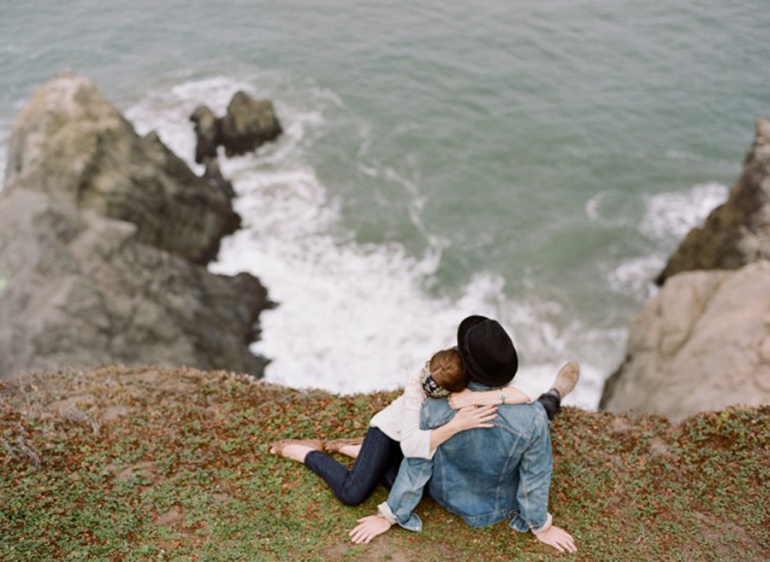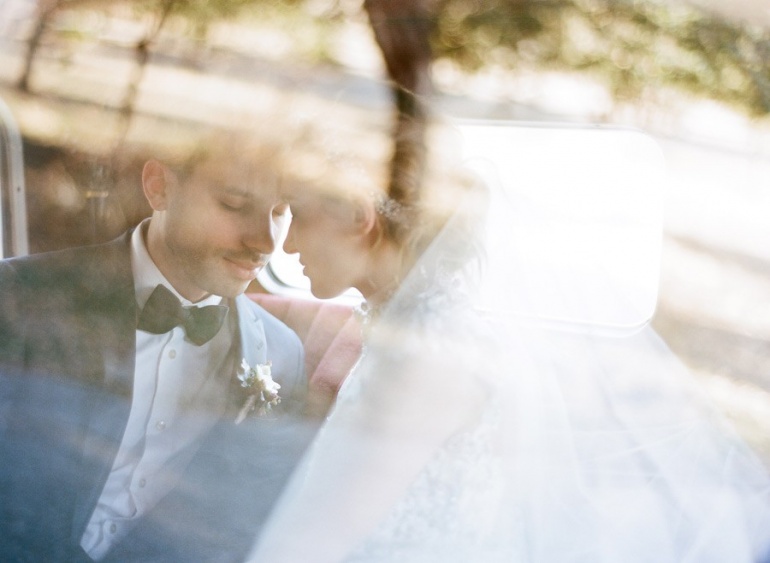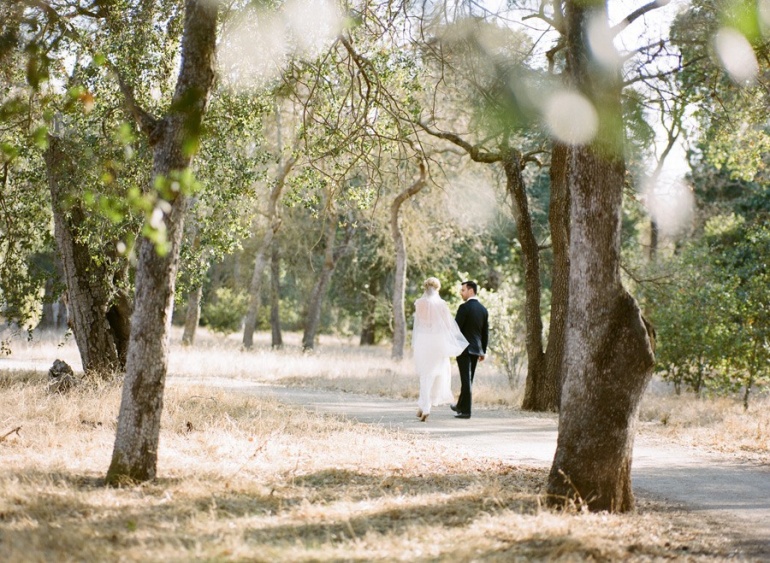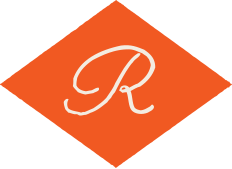Richard's Photographer Spotlight: Josh Gruetzmacher
Josh Gruetzmacher is in Richard Photo Lab's Photog Spotlight! Josh takes an unobtrusive, documentary-style approach to shooting weddings, helping him capture images filled with life and honesty. Josh took a little time to talk to Richard about how art history inspires him, his involvement in Geraldine Magazine, and his love of all-things 90s—so spend a little time getting to know Josh!
Richard: What first sparked your passion for photography?
Josh Gruetzmacher: Over the years, I've had several different people influence my journey in photography. The first being my dad—he was always taking photos, and as a kid I remember being super annoyed by him photographing everything. He'd say "Do it again!", "Go over here", “Do this, do that”... I have two brothers, and we'd all be like, "Daaaaaaaad, no". My grandpa was also always very into photography, so I feel like being around cameras and people who are excited about taking photos contributed to my being a photographer.
My first journeys into wedding photography were through my friendship with David Jay, and he was really doing his own thing… that's influenced how I've thought about weddings. A lot of the work that inspired me was really simple and straightforward and honest. Looking at people like Jose Villa, Tec Petaja, Aaron Delesie—some of the prominent wedding photographers—I saw that they all had their own take on wedding photography, but there was a consistency in the timelessness. And that sparked my journey into film photography as a professional.

R: What inspires you as an artist?
JG: There are so many different things in the world to see. In any given situation, you might be seeing something really visually interesting—there's a lot of ways that a photo might show the feelings that you're experiencing in that situation. Especially when you're somewhere new or exotic, you can just be blown away by how intense the feeling of being there is. And when you're taking photos, you're crafting an experience out of that. I love the challenge of how to best fit what's in front of me, both visually and emotionally, into the camera.
I also love art and art history. When I was in college, I went to an exhibit at the LACMA; they had different pairings of modern art, both figurative and non-figurative. One example that they paired was a Mark Rothko, which is all rectangles of color, with an Edvard Munch, which was a figure on a pier (it had some similarities to "The Scream"). The color palettes of the two pieces were totally identical. So, even though they're both totally different forms, the mixture of colors gave them a similar feeling. That's been really influential for me—even at a wedding, you could be taking a photo of someone's centerpiece, but that photo might have a lot to say about the emotions and the story of the evening.
R: How do you find a balance between being creatively fulfilled and being able to pay the bills?
JG: I think that if what you do personally is completely different than what you do for work, then maybe there's an area to merge the two. If you didn't have to answer to somebody, and you could just do whatever you want… THAT is what you should be doing for your clients! When I was looking for photographers for my own wedding, and seeing photographs that I loved, I had to ask myself: why am I not doing that for my clients, why am I not making those types of images? Why not make stuff I am proud of, that I would want on my wall?
There are definitely times that I feel more inspired than others, sure. But as a professional, there is a responsibility to deliver a certain level of product. If I were strictly an artist, I could say, "Maybe I'll shoot this next week when I feel more inspired or when the lighting is better”—but that's one thing I enjoy about weddings. There is a certain level of challenge because there is no "let's just do it tomorrow".
R: We've been hearing a lot of buzz about a new wedding publication, Geraldine Magazine. Can you share a bit about your involvement in the project?
JG: Yeah, it's been a dream to see it come to life. There has been so much evolution in the wedding space with the advent of major wedding blogs, Pinterest, and online magazines. It has affected the traditional publishing world in so many ways. Geraldine is great because it is looking to fill that desire for the tangible—a print document full of physical inspiration for couples and their weddings. It favors the editorial content, and so far does not rely on tons of advertising, which in my opinion, can really disrupt the content in a magazine—I think that's why people love Kinfolk or Darling. Many other national print wedding magazines have 80% ads and only 20% of the rich editorial content.
I have a degree in Graphic Design, so I especially love all of the fine-tuning that has gone into Geraldine. It is everything I could want in a wedding magazine—from the design, layout, paper stock, finishing—it's a beautiful magazine. Well, it's more like a book to look at and read. It's been great to work with Daniel Tran and his team in both creating content and having my work featured, but also in helping out on the back end. It's also been a dream to see many of my friends and others I look up to in the industry getting involved with Geraldine. Most of the content is shot on film, too, so you know that's part of the secret sauce! It is available nationally at Barnes and Noble, Anthrolopogie, and BHLDN stores. I'm happy to have a beautiful wedding I photographed, as well as two other editorials, featured in Issue 02 that is available now.

R: What is your favorite camera?
JG: Lately, my favorite camera is the Polaroid Super Colorpack. It's a plastic Polaroid camera from the '70s, and it's automatic exposure. You can dial it up or down to be brighter or darker, and you just turn the knob to focus. The print coming out is like digital meets analog; you get the instant gratification of seeing it right away and being able to share it with people right away, but then it's also this really beautiful one-off. Just one of one.
R: Why do you shoot film as a pro photographer?
JG: Especially with digital cameras these days, it's common to manipulate images and tweak them. But to me, the more straightforward an image is, the better. Film has an honest look to it—intuitively, it just is what it is. Film has inherent qualities you can't fake because they’re a result of these physical processes of making the film and capturing the images and developing it.
There are certain flavors that come with film. Like, if you're in the kitchen cooking, you can choose different types of salt to cook with. Kosher salt, sea salt, Himalayan salt... they all bring slightly different qualities. That's what film is. It's not that one thing is universally better than the other; film is just part of my "recipe". Any artist working towards a consistent look finds what makes their work impactful and listens to the voice that says "if I do this, it's going to be awesome!".

R: Why is it important to have continuous communication with your lab(s)?
JG: It's important to be "going steady" with your lab. First, you have to define the relationship—are we going out here? That's an essential base step. Because once you do that, you start thinking: how am I committed to making this lab understand the kind of work I want to make? If you're floating from lab to lab, it's hard to develop that level of consistency, because it takes time to merge how you see your work with how your lab is handling your work. I'm not gonna lie, I did "fool around" a little bit before committing to Richard. I sent some rolls to a few other unnamed labs, but sometimes you just like how someone handles your rolls better than someone else. Oh man, we gotta edit this...
In all seriousness, though, the person scanning has a huge amount of control over your images, that's just the bottom line. Some labs might not want people to be aware of how much control an individual scanner might have. So, you need to have a communication that happens almost seamlessly; through that feedback, your look is continually being honed in. As opposed to just one day throwing a tantrum and saying, "It doesn't look like what I want! I'm angry, I'm so angry!"
Some of my favorite photographers have always sent their work to Richard, like Jose Villa. There is a mutual commitment with someone like that to maintain the integrity and aesthetic preferences of his images. Richard is committed to producing what each client wants and, in turn, the client is invested in making sure their images, their "babies", are handled with the same concern and care they put into creating them. There's a history of longevity and consistency with Richard.

R: Let’s play a game of “Either/Or”! Savory or sweet?
JG: Sweet.
R: Chocolate or vanilla?
JG: Dark chocolate
R: Dogs or cats?
JG: Poodles.
R: Urban or rural?
JG: Urban.
R: Vintage or modern?
JG: Modern.
R: Biggie or Tupac?
JG: I like Kanye. Imma let you finish, but first...
R: Warm weather or cold weather?
JG: Cold weather.
R: Early bird or night owl?
JG: Night owl.
R: Crossword or Sudoku?
JG: Sudoku.
R: Breakfast or dinner?
JG: Dinner.
R: Batman or Superman?
JG: Batman.
R: Historical Non-fiction or SciFi/Fantasy?
JG: SciFi/Fantasy.
R: Comedy or drama?
JG: Drama.
R: Truth or dare?
JG: Dare.
R: What song do you listen to to get pumped up?
JG: I like to listen to music in the car when I drive out to a shoot, normally something faster or more intense, like some punk rock from the 90s. I love everything that Fat Wreck Cords ever put out. Or rap music.
R: If you weren't a photographer, what would you be when you grow up?
JG: A graphic designer.
R: If you were a super hero, what would your super power be?
JG: I’d be like Wolverine, because I like his swagger.
R: What is your favorite word, and why?
JG: "Awesome". It can be used in so many ways, and it can also totally date you. I'm stuck in the 90s.
Posted in All Interviews



